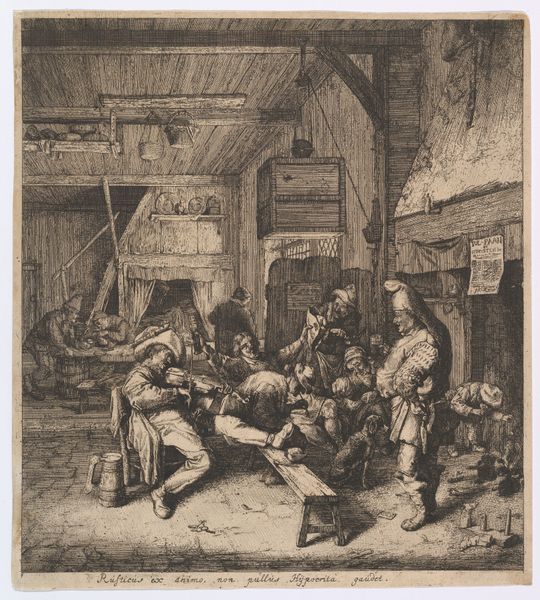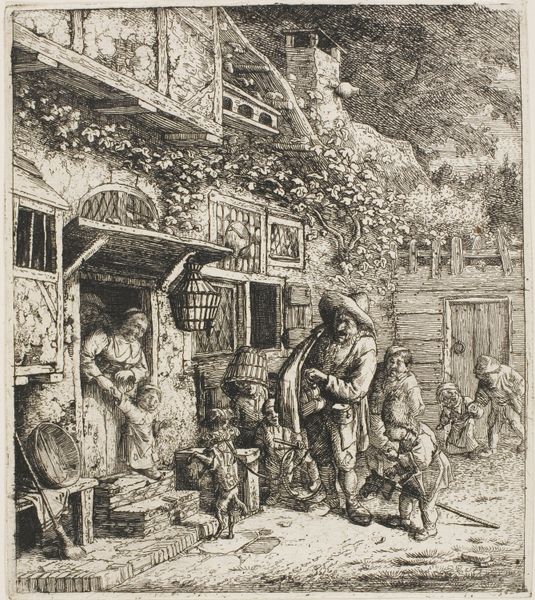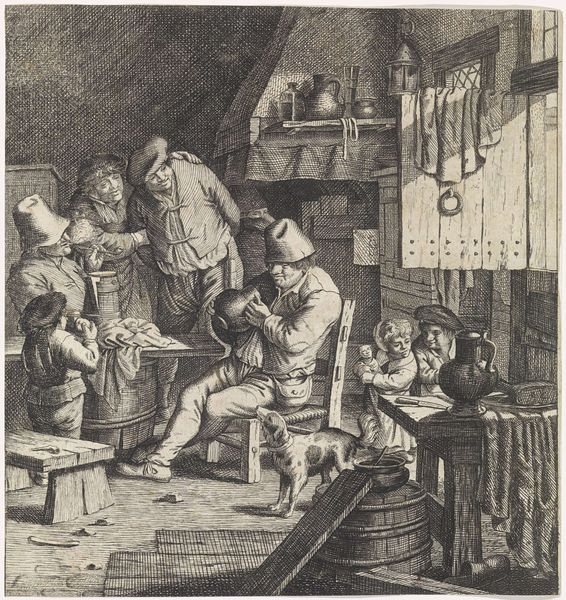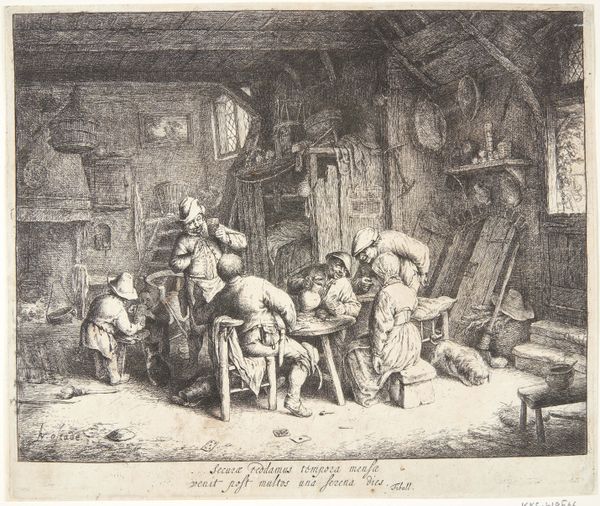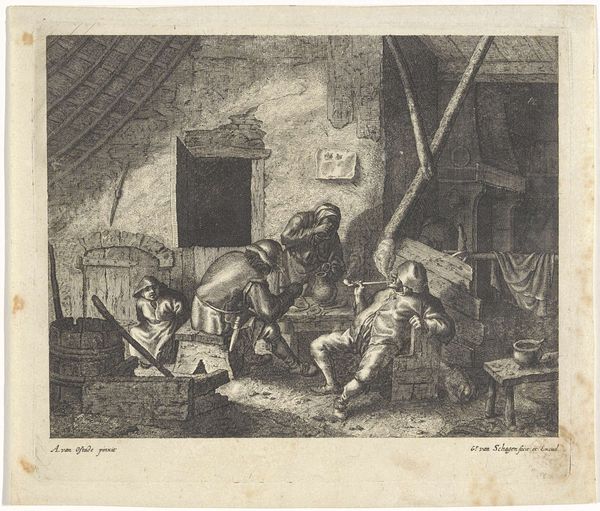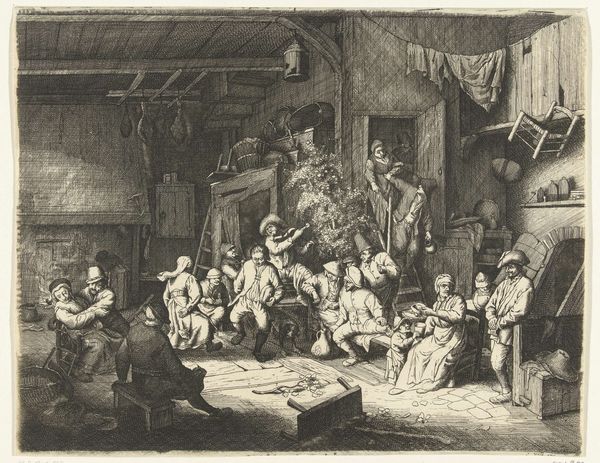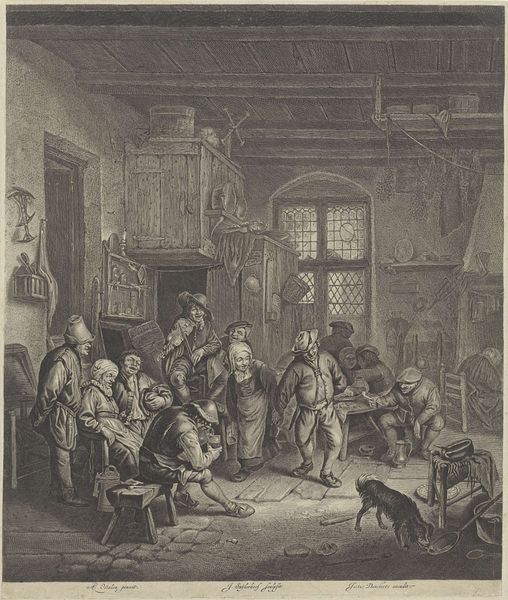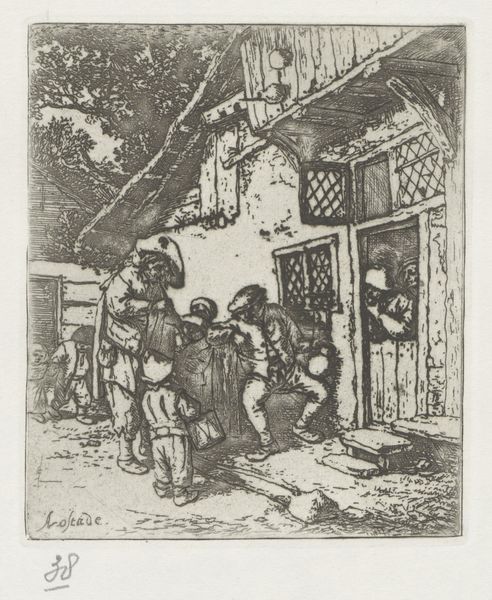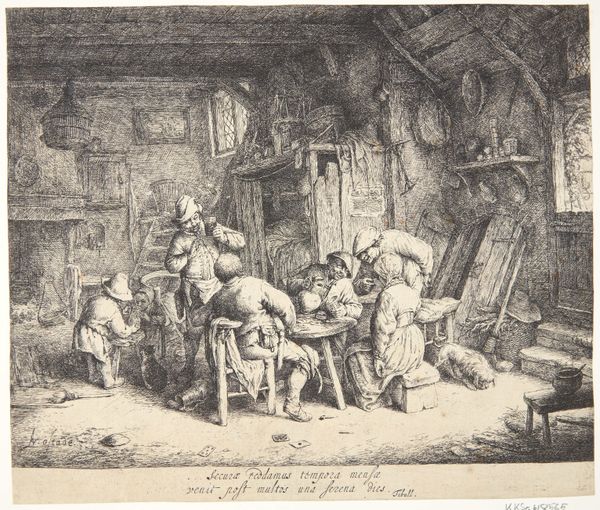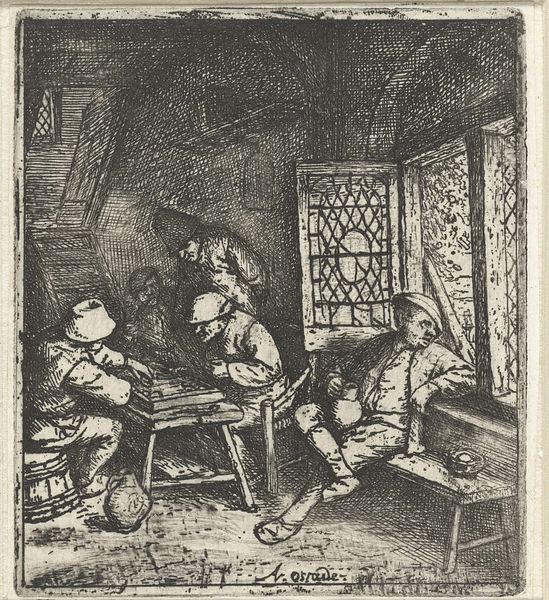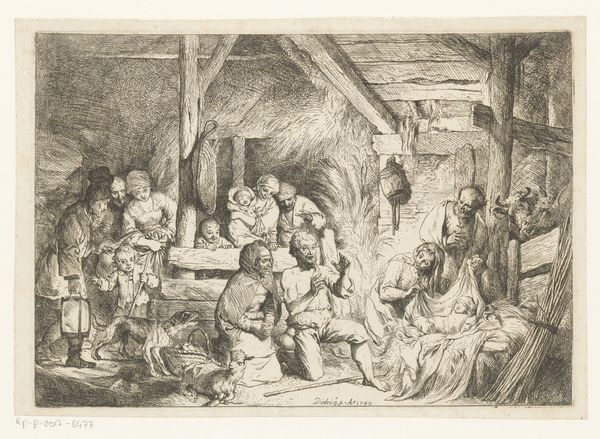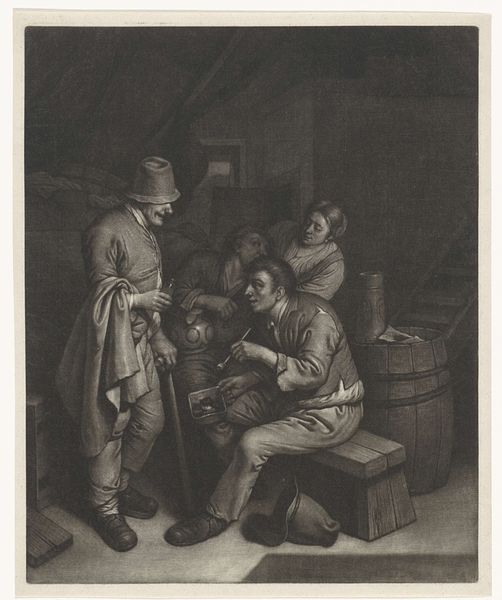
print, etching
#
dutch-golden-age
# print
#
etching
#
figuration
#
genre-painting
Dimensions: 11 x 10 in. (27.94 x 25.4 cm) (plate)
Copyright: Public Domain
Curator: What a scene! This print, titled "The Violin Player," was created by Cornelis Dusart around the 17th century, during the Dutch Golden Age. Dusart captured an incredibly animated, albeit disorderly, gathering in what looks like a tavern or common room. Editor: My initial reaction is a sense of cramped, cluttered, but certainly vibrant energy. The etching technique creates so much texture, it really pulls you into the rough-and-tumble materiality of the space. I wonder, how did this etching process influence the subject matter itself? Curator: Absolutely. As an etching, this work would have been relatively accessible to a broad public, thus increasing access to art imagery for ordinary people. And with that in mind, we can observe that genre scenes depicting everyday life became incredibly popular, reflecting the rise of the merchant class and the changing social dynamics of the time. Consider the politics of imagery inherent in a work like this one; while clearly made for enjoyment, what can we discern about artistic consumption or the art market at that time? Editor: That’s a key point—thinking about how prints broadened distribution, turning art into more of a consumer product. It brings up considerations of class. Dusart's technique using line and shadow seems particularly well-suited for depicting the boisterous figures, but also for rendering the rough, utilitarian objects around them: the barrels, tankards, wooden beams... Were materials of this kind easily found within the printing atelier itself? I mean, even consider the various costumes. What sort of labour went into such material items, or were items borrowed as props? Curator: And speaking of class and its reflection on this etching and its figures. The dog next to a woman carrying tankards could perhaps act as a form of social signalling that could inform us of that woman’s status in that space, as well as potentially signalling aspects regarding hygiene at the time, or other social values that reflect on daily existence and cultural codes. The inclusion of musical themes as well opens an interesting portal as music was a very big part of Dutch life during this era. How were art institutions displaying or interacting with these artworks, particularly prints depicting daily or tavern life at this time? Editor: Looking at this composition through a materialist lens really gives me a sharper sense of how closely tied Dusart's art was to the lives—the material conditions—of his audience and of himself. Curator: Indeed, these observations concerning his etching prompt reflection on how it functioned within 17th century Dutch society as well.
Comments
No comments
Be the first to comment and join the conversation on the ultimate creative platform.
